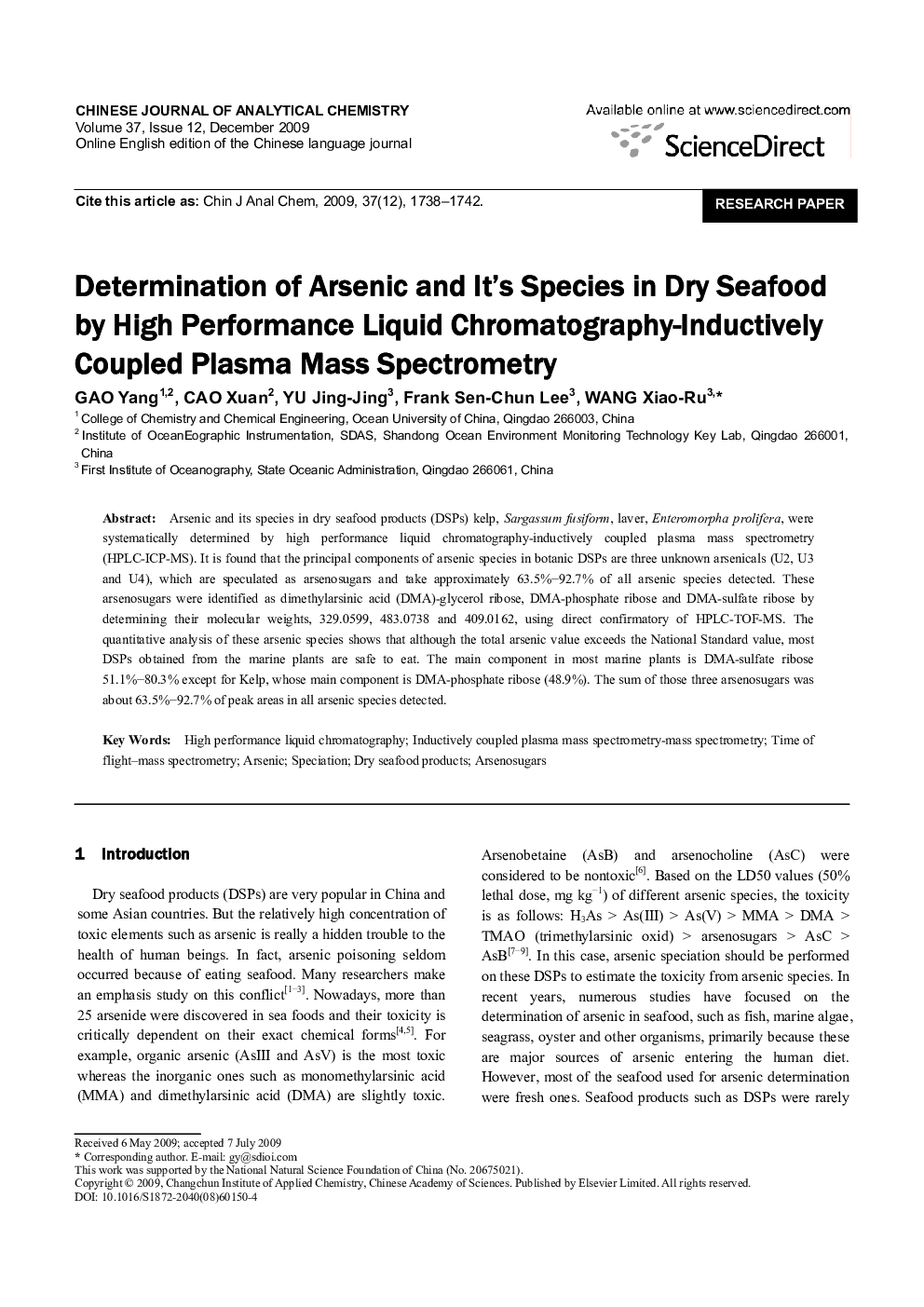| Article ID | Journal | Published Year | Pages | File Type |
|---|---|---|---|---|
| 1182723 | Chinese Journal of Analytical Chemistry | 2009 | 5 Pages |
Arsenic and its species in dry seafood products (DSPs) kelp, Sargassum fusiform, laver, Enteromorpha prolifera, were systematically determined by high performance liquid chromatography-inductively coupled plasma mass spectrometry (HPLC-ICP-MS). It is found that the principal components of arsenic species in botanic DSPs are three unknown arsenicals (U2, U3 and U4), which are speculated as arsenosugars and take approximately 63.5%-92.7% of all arsenic species detected. These arsenosugars were identified as dimethylarsinic acid (DMA)-glycerol ribose, DMA-phosphate ribose and DMA-sulfate ribose by determining their molecular weights, 329.0599, 483.0738 and 409.0162, using direct confirmatory of HPLC-TOF-MS. The quantitative analysis of these arsenic species shows that although the total arsenic value exceeds the National Standard value, most DSPs obtained from the marine plants are safe to eat. The main component in most marine plants is DMA-sulfate ribose 51.1%-80.3% except for Kelp, whose main component is DMA-phosphate ribose (48.9%). The sum of those three arsenosugars was about 63.5%-92.7% of peak areas in all arsenic species detected.
